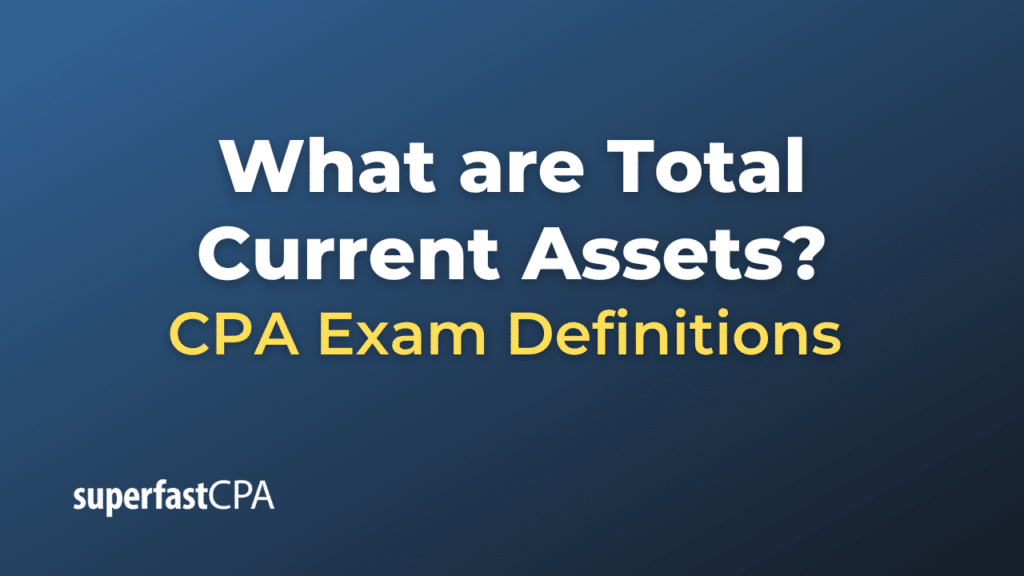Total Current Assets
Total current assets refer to the sum of all assets that are expected to be converted into cash or used up within a short period, typically one year or less. They represent the most liquid assets of a company and play a crucial role in assessing a company’s short-term liquidity and operational efficiency.
Total current assets typically include the following:
- Cash and Cash Equivalents : This includes currency, coins, checks, money orders, and short-term, highly liquid investments like Treasury bills or money market funds that can be easily and quickly converted into cash.
- Accounts Receivable: Amounts owed to the company by its customers for goods sold or services rendered on credit. It’s essentially money that is expected to be received within a short period.
- Inventory: Items that are either raw materials, work-in-process, or finished goods that a company intends to sell in the normal course of business.
- Prepaid Expenses: Payments made in advance for expenses that will benefit the company in the future, like insurance premiums or rent. Over time, as the benefits are received or the expenses are incurred, these amounts are expensed.
- Marketable Securities: Short-term investments that can be quickly sold to convert them into cash.
- Short-term notes receivable: Loans or promissory notes that the company has made and expects to be repaid within one year.
- Other Current Assets: Other assets that are expected to be converted into cash, sold, or consumed within a year or the company’s operating cycle, whichever is longer.
To determine the total current assets, simply sum up the values of all the above assets from the company’s balance sheet.
Total Current Assets = Cash + Accounts Receivable + Inventory + Prepaid Expenses + Marketable Securities + Short-term Notes Receivable + Other Current Assets
Understanding total current assets is essential for investors and creditors to gauge a company’s ability to cover its short-term liabilities with its short-term assets.
Example of Total Current Assets
Let’s use a hypothetical example to illustrate the concept of total current assets.
Scenario: “BrightTech Electronics Ltd.”
BrightTech Electronics Ltd. is a company that manufactures and sells electronic gadgets. Here’s a breakdown of their current assets as given on their balance sheet:
- Cash and Cash Equivalents: $25,000
- Accounts Receivable: $15,000
- Inventory: $50,000
- Prepaid Rent: $5,000
- Marketable Securities: $10,000
- Short-term Notes Receivable: $5,000
- Other Current Assets: $2,000
To determine the total current assets of BrightTech Electronics Ltd., we’ll sum up these amounts.
Calculation:
Total Current Assets = Cash + Accounts Receivable + Inventory + Prepaid Rent + Marketable Securities + Short-term Notes Receivable + Other Current Assets
Total Current Assets = $25,000 + $15,000 + $50,000 + $5,000 + $10,000 + $5,000 + $2,000
Total Current Assets = $112,000
Interpretation:
BrightTech Electronics Ltd. has total current assets amounting to $112,000. This means they have assets valued at $112,000 that are either cash, will likely be converted into cash, or will be used up within the next year.
Having a higher amount in total current assets indicates the company has a good amount of liquidity, which can be crucial for meeting short-term obligations, investing in quick opportunities, or sustaining the business during downturns. However, a detailed financial analysis would be needed to fully assess the company’s financial health.













